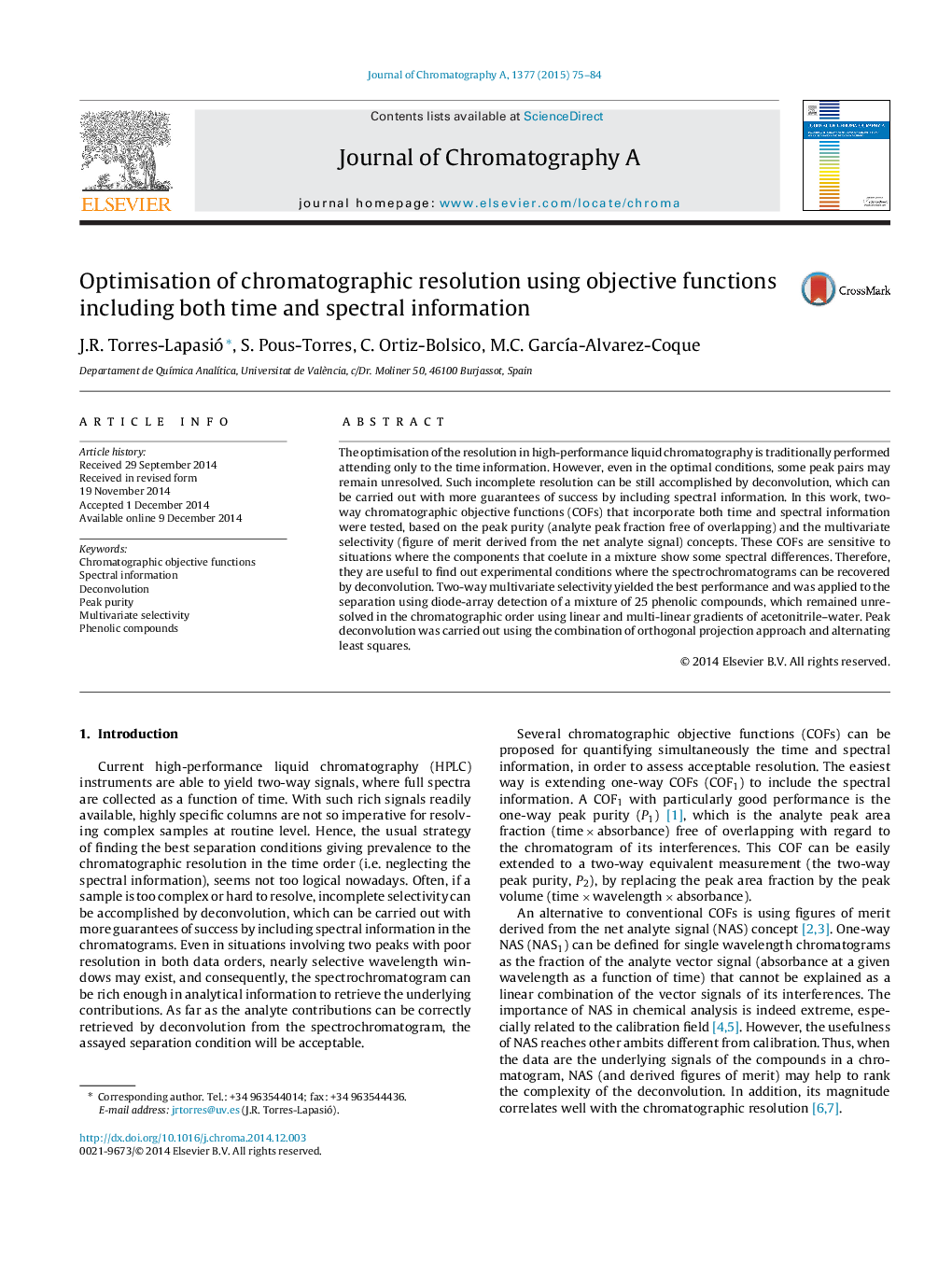| Article ID | Journal | Published Year | Pages | File Type |
|---|---|---|---|---|
| 1198925 | Journal of Chromatography A | 2015 | 10 Pages |
•Time- and time-spectral chromatographic objective functions are compared.•Some extreme situations giving misleading results are shown.•Two-way multivariate selectivity by matrix unfolding was the most practical.•OPA-ALS was used when deconvolution was required and to check the approach validity.•Guidelines for an efficient calculation are given.
The optimisation of the resolution in high-performance liquid chromatography is traditionally performed attending only to the time information. However, even in the optimal conditions, some peak pairs may remain unresolved. Such incomplete resolution can be still accomplished by deconvolution, which can be carried out with more guarantees of success by including spectral information. In this work, two-way chromatographic objective functions (COFs) that incorporate both time and spectral information were tested, based on the peak purity (analyte peak fraction free of overlapping) and the multivariate selectivity (figure of merit derived from the net analyte signal) concepts. These COFs are sensitive to situations where the components that coelute in a mixture show some spectral differences. Therefore, they are useful to find out experimental conditions where the spectrochromatograms can be recovered by deconvolution. Two-way multivariate selectivity yielded the best performance and was applied to the separation using diode-array detection of a mixture of 25 phenolic compounds, which remained unresolved in the chromatographic order using linear and multi-linear gradients of acetonitrile–water. Peak deconvolution was carried out using the combination of orthogonal projection approach and alternating least squares.
